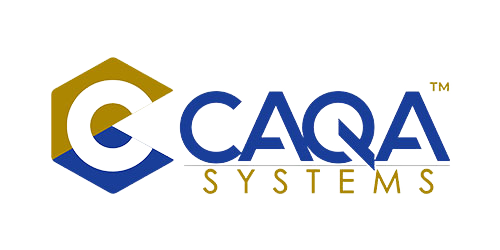THE GATHERING STORM: MAPPING AUSTRALIA'S WIDENING SKILLS GAP
Australia stands at a critical juncture in its economic development, confronting one of the most severe skills shortages in recent history. The statistics paint a stark picture: 75% of businesses report being affected by skills shortages in 2024, with 71% expecting these challenges to persist into 2025. This workforce crisis is not merely a temporary disruption but a structural challenge threatening to undermine national productivity, stall major infrastructure projects, and constrain economic growth across multiple sectors.
The scope of the problem extends far beyond isolated industries or regions. Nearly one-third of all occupations—303 out of 916—are currently experiencing shortages, according to recent analyses. Fill rates for job vacancies hover at just 64.3%, meaning more than one in three positions remain unfilled, with the situation particularly dire in regional areas where the fill rate drops to 59.4%. Behind these numbers lies a troubling reality: despite 1.9 million people not working but wanting work, with 1.1 million available to start immediately, structural mismatches between available skills and market demands persist.
For small and medium enterprises, the backbone of the Australian economy, the impact is especially acute. Sixty-five per cent of SME owners report ongoing skill shortages, with 53% feeling they lack adequate resources and skilled staff to operate effectively. These businesses, often without the resources to compete with larger corporations for talent or invest heavily in training, find themselves particularly vulnerable to the widening skills gap.
What makes this crisis particularly challenging is its breadth. The shortages span traditional trades, emerging technologies, healthcare, education, and professional services, touching virtually every sector of the economy. This is not simply a matter of cyclical labour market adjustments but a fundamental misalignment between Australia's education and training systems and the rapidly evolving needs of its economy. As such, it demands comprehensive, coordinated responses that extend beyond short-term fixes to address deeper structural issues in workforce development and deployment.
THE ECONOMIC CONSEQUENCES: COUNTING THE COST OF INACTION
The economic toll of Australia's skills crisis extends far beyond unfilled positions on organisational charts. It manifests in concrete, measurable impacts on business operations, project timelines, innovation capacity, and ultimately, national economic performance. These effects ripple throughout supply chains and across sectors, creating cascading challenges that threaten to undermine Australia's competitive position in the global economy.
For individual businesses, the most immediate impact is on productivity and operational capacity. When skilled positions remain vacant, existing staff must take on additional responsibilities, leading to increased workloads, potential burnout, and inevitably, reduced output per worker. This productivity drag is particularly problematic in a global economic environment where Australia already faces challenges in maintaining competitiveness against lower-cost producers. The productivity consequences extend to quality and innovation as well—organisations struggling to maintain basic operations have little bandwidth for process improvements or new product development.
Labour costs represent another significant economic impact. In sectors experiencing acute shortages, wage pressures have intensified as employers compete for scarce talent. While beneficial for workers in high-demand occupations, these wage premiums often exceed productivity gains, squeezing profit margins and potentially driving inflation. For small businesses in particular, the combination of higher labour costs and unfilled positions creates an existential threat, with 25% reporting they have not yet recovered from the economic impact of the pandemic.
The macro-level consequences are equally concerning. Major national priorities face substantial challenges due to skills shortages. The housing crisis—already a pressing social and economic issue—is exacerbated by the estimated shortfall of 83,000 trade workers needed to meet construction targets, including 22,000 carpenters, 17,000 electricians, and 12,000 plumbers. Similarly, Australia's ambitions in renewable energy, digital transformation, and advanced manufacturing all face potential delays and cost overruns due to critical skills gaps in engineering, technology, and project management.
Perhaps most worryingly, skills shortages constrain future growth potential by limiting business expansion and innovation. When organisations cannot access the human capital needed to develop new products, enter new markets, or adopt emerging technologies, their long-term competitiveness suffers. In a global knowledge economy where human capital is often the decisive factor in economic success, persistent skills shortages represent not just a present challenge but a mortgage on Australia's economic future.
INDUSTRY IN CRISIS: SECTOR-SPECIFIC WORKFORCE CHALLENGES
While the skills crisis affects the entire economy, its manifestations vary significantly across industries, each facing unique workforce challenges that require targeted solutions. Understanding these sector-specific dynamics is essential to developing effective responses that address the particular needs and constraints of different parts of the economy.
The healthcare sector stands at the epicentre of Australia's skills crisis, confronting unprecedented workforce challenges driven by demographic shifts, technological change, and pandemic-related burnout. With 70,200 new jobs expected between 2023 and 2025, the sector already faces critical shortages of registered nurses, general practitioners, and aged care workers. The aging population intensifies these pressures, with projections indicating Australia will need over 100,000 additional nurses and aged care workers by 2030 simply to maintain current service levels. The shortage is particularly acute in aged care, where reforms following the Royal Commission have increased staffing requirements without a corresponding expansion of the qualified workforce.
Construction and trades face similarly daunting challenges, with the housing and infrastructure boom creating intense competition for qualified workers. The Housing Industry Association's estimate of an 83,000-worker shortfall represents not just a business challenge but a threat to national housing affordability goals and infrastructure development timetables. Most concerning is the long-term nature of these shortages—skilled trades require years of training and apprenticeship, meaning that even with immediate interventions, the workforce gap will persist for some time. Regional areas face particularly severe shortages, with many projects delayed or cancelled due to the unavailability of qualified tradespeople.
The technology sector confronts perhaps the most rapidly evolving skills landscape, with cybersecurity, cloud computing, artificial intelligence, and data analytics all experiencing severe talent shortages. The expected 30,000 unfilled cybersecurity positions by 2026 highlight how quickly demand has outpaced the education system's ability to produce qualified professionals. These shortages not only affect technology companies but also impact virtually all sectors as digital transformation becomes essential to competitiveness. Moreover, unlike some other areas, these roles often cannot be filled by unqualified workers or through short-term training—they require specialised education and experience that takes years to develop.
Education and training represent a particularly challenging case, as shortages in this sector affect the very pipeline needed to address workforce gaps across the economy. Schools, universities, and vocational institutions require an estimated 50,000 more teachers and trainers to address growing student populations and evolving skill needs. Early childhood education faces especially severe shortages, creating ripple effects for workforce participation among parents. The shortage of VET trainers is particularly concerning, as it constrains the system's capacity to expand in response to increased demand for vocational qualifications.
Emerging industries face their own distinct workforce challenges. The renewable energy sector, expected to create thousands of jobs as Australia transitions to cleaner energy sources, confronts shortages of specialised engineers, technicians, and project managers. Similarly, advanced manufacturing requires new combinations of technical, digital, and problem-solving skills that existing education pathways struggle to provide. These emerging sectors often fall between traditional education silos, requiring innovative approaches to skill development that combine elements of vocational and higher education.
VET'S VITAL ROLE: REALIGNING SKILLS WITH MARKET DEMANDS
In the face of these pervasive skills challenges, Australia's Vocational Education and Training (VET) sector has emerged as a critical component of the national response. The VET system's focus on practical, industry-aligned training makes it uniquely positioned to address immediate workforce needs while building pathways for longer-term skills development across the economy.
The data underscores VET's centrality to Australia's workforce strategy: over 60% of total employment growth has occurred in occupations where VET qualifications are the primary pathway. Looking forward, nearly half of all new jobs created over the next decade are expected to require VET qualifications. This represents not just a continuation of existing patterns but an acceleration of VET's importance in an economy increasingly defined by technical specialisation and practical skills alongside traditional professional qualifications.
What makes VET particularly valuable in addressing skills shortages is its responsiveness to industry needs. Unlike more theoretical educational pathways, VET programs are designed with direct input from employers and industry bodies, ensuring training aligns with workplace requirements. This is evident in the rapid development of new qualifications and skill sets in emerging areas such as renewable energy, digital technologies, and advanced manufacturing. The sector's capacity to create targeted, job-specific training enables faster workforce entry and greater employability, critical advantages when addressing acute shortages.
The breadth of VET's impact extends far beyond traditional trades. While apprenticeships in carpentry, electrical, and plumbing remain vital pathways, VET also provides essential training for healthcare workers, IT professionals, early childhood educators, and business services roles. This diversity enables the sector to address shortages across multiple industries simultaneously, providing a comprehensive response to workforce challenges. The integration of micro-credentials and skill sets alongside full qualifications adds further flexibility, allowing for rapid upskilling in specific areas without requiring lengthy full-qualification pathways.
VET's effectiveness in addressing skills shortages is perhaps most evident in its outcomes data. Employability rates for VET graduates remain strong, particularly in areas of identified shortage. Moreover, the earn-while-you-learn model of apprenticeships and traineeships provides immediate workforce participation while developing long-term capabilities, addressing both immediate labour needs and future skills requirements. For industries facing critical shortages, such as aged care and disability support, VET pathways provide the fastest route to increasing qualified workforce numbers while maintaining quality standards.
Government recognition of VET's crucial role is reflected in significant funding commitments. In 2023, total government expenditure on VET reached $10.9 billion, with $6.1 billion dedicated to training delivery and $3.3 billion for employer incentives. This substantial investment acknowledges that addressing Australia's skills crisis requires more than market mechanisms alone—it demands coordinated policy interventions that increase both the supply of skilled workers and the capacity of the training system to meet evolving industry needs.
STRATEGIC WORKFORCE PLANNING: THE ROLE OF JOBS AND SKILLS AUSTRALIA
Recognising that effective responses to skills shortages require sophisticated analysis and coordination, the Australian government has established Jobs and Skills Australia (JSA) as the lead agency for strategic workforce planning and skills forecasting. JSA's data-driven approach provides the evidence base for policy interventions and system reforms aimed at closing the gap between workforce supply and demand across the economy.
JSA's mandate encompasses several interconnected functions essential to addressing skills shortages. At its core is workforce forecasting—analysing current labour market data, demographic trends, technological changes, and industry developments to project future skills needs. This forecasting doesn't simply extrapolate current patterns but incorporates emerging industries, technological disruptions, and changing work practices to anticipate skills demands before they become critical shortages. The agency's quarterly Skills Shortage reports and annual Occupation Shortage List provide regularly updated snapshots of workforce challenges across more than 900 occupations, enabling targeted responses to specific areas of need.
Beyond data collection and analysis, JSA plays a crucial role in system alignment, working across vocational education, higher education, immigration, and employment services to create coherent pathways between skills development and workforce needs. This includes advising on qualification design, identifying priority areas for funding, recommending adjustments to migration settings, and highlighting opportunities for increased workforce participation among underrepresented groups. By taking this system-wide view, JSA helps overcome the fragmentation that has historically hampered effective responses to skills challenges.
JSA's Strategic Plan for 2024-2027 establishes five core outcomes that directly address Australia's skills crisis: fostering inclusive participation, understanding today's workforce, shaping the future workforce, optimising pathways and system architecture, and activating informed dialogue across stakeholders. These interconnected priorities recognise that addressing skills shortages requires not just technical solutions but fundamental changes in how skills are developed, deployed, and valued across the economy.
The agency's evidence-based approach supports major national initiatives, including the Employment White Paper, Future Made in Australia, and the Homes for Australia Plan. By providing robust workforce analysis, JSA helps ensure realistic assessments of skills availability and development timeframes underpin these broader economic strategies. This integration of workforce planning with broader economic policy represents a significant advance from the more siloed approaches of the past, when skills development was often treated as separate from economic strategy.
Looking forward, JSA's work program includes targeted studies on regional labour markets, literacy and numeracy requirements, and specific industry sectors facing critical shortages. The agency's focus on care and support industries, clean energy, digital transformation, and defence recognises these as both areas of acute shortage and strategic importance to Australia's future. By combining quantitative analysis with extensive stakeholder engagement, JSA aims to develop not just accurate forecasts but practical, implementable recommendations that address both immediate needs and long-term workforce resilience.
POLICY INNOVATION: NEW APPROACHES TO WORKFORCE DEVELOPMENT
Addressing Australia's skills crisis requires more than incremental adjustments to existing approaches—it demands policy innovation that fundamentally rethinks how skills are developed, deployed, and valued across the economy. Recent policy initiatives reflect this recognition, moving beyond traditional models to explore new partnerships, funding mechanisms, and delivery approaches that better align with contemporary workforce challenges.
The VET Workforce Blueprint exemplifies this innovative approach, acknowledging that addressing skills shortages in the broader economy first requires strengthening the VET workforce itself. The blueprint identifies 14 specific actions to attract, retain, and develop VET educators and trainers, supported by $100 million in federal and matched state funding over five years. These actions range from industry exchanges that keep trainers' skills current to improved career pathways and recognition of teaching excellence. By treating the VET workforce as a strategic asset requiring dedicated investment, the blueprint addresses a critical constraint on the system's capacity to meet growing demand.
Funding innovations represents another area of policy experimentation. Traditional models based primarily on subsidising course delivery are being complemented by more targeted approaches that directly address specific shortages and barriers. Employer incentives remain important, with $3.3 billion allocated in 2023, but increasingly these are focused on priority industries and underrepresented groups rather than broadly distributed. Similarly, student support is becoming more tailored, with targeted assistance for disadvantaged learners and those entering high-shortage occupations. These more nuanced funding approaches aim to maximise impact by directing resources where market mechanisms alone have proven insufficient.
The growing emphasis on micro-credentials and skill sets reflects recognition that traditional qualification structures may not always align with contemporary workforce needs. These shorter, focused training modules enable rapid response to emerging skills gaps without requiring learners to complete full qualifications when only specific competencies are needed. The 315% increase in micro-credential completions between 2020 and 2025 demonstrates strong market demand for these flexible approaches. Policy frameworks are evolving to support this shift, with work underway to ensure these shorter forms of training are appropriately recognised, quality-assured, and integrated with broader qualification frameworks.
Digital transformation of training delivery represents yet another area of policy innovation. While the pandemic accelerated the adoption of online and blended delivery models out of necessity, policy is now focused on leveraging these approaches to address persistent challenges of access and flexibility. The statistics show a dramatic shift, with 89% of VET providers now offering blended learning compared to just 44% in 2018. This expansion of digital delivery is particularly significant for addressing regional skills shortages, enabling learners in remote areas to access quality training without relocation. Policy support for this transformation includes investment in digital infrastructure, educator capability development, and quality frameworks for technology-enhanced learning.
Perhaps most fundamentally, recent policy innovations reflect a shift toward more integrated approaches that break down traditional silos between education sectors, employment services, and industry. The National Skills Agreement aims to coordinate federal and state efforts, ensuring coherent approaches despite divided responsibilities. Similarly, work is underway to create clearer pathways between VET and higher education, recognising that contemporary careers often require combinations of practical and theoretical knowledge. Industry partnerships are becoming more systematic through structures like Jobs and Skills Councils, ensuring training content remains relevant to workplace needs. These coordination mechanisms address the fragmentation that has historically limited the effectiveness of skills development efforts.
MIGRATION AND DOMESTIC TRAINING: BALANCING SHORT AND LONG-TERM SOLUTIONS
Australia's response to skills shortages involves a delicate balancing act between skilled migration to address immediate gaps and domestic training to build long-term workforce capacity. This dual approach recognises that neither strategy alone can fully address the scope and urgency of current shortages, but finding the right balance requires careful consideration of economic, social, and educational factors.
Skilled migration plays an essential role in addressing critical shortages across key sectors. The Occupation Shortage List and Core Skills Occupation List guide migration policy, currently identifying 456 occupations as eligible for skilled migration pathways. These lists focus particularly on roles where domestic supply is insufficient to meet demand, including healthcare professionals, trades workers, engineers, and IT specialists. For employers facing immediate workforce constraints, skilled migration offers a pathway to access qualified workers when local recruitment proves impossible. This is particularly critical in healthcare, where patient care would be compromised without international recruitment, and in specialised technical roles where Australia's education system currently produces insufficient graduates.
However, migration represents a complement to, not a substitute for, domestic skills development. Relying too heavily on international recruitment can create dependencies and vulnerabilities, as the pandemic border closures starkly demonstrated. Moreover, migration alone cannot address the structural misalignments in Australia's skills ecosystem or build the workforce capabilities needed for long-term economic transformation. Sustainable solutions require strengthening domestic training pathways alongside the strategic use of migration to address specific gaps.
The policy debate around this balance continues to evolve. Current approaches emphasise targeted, demand-driven migration that responds to genuine skill shortages without undermining local employment opportunities or wage conditions. This includes greater scrutiny of employer nominations, regional visa allocations to address geographic disparities, and pathways to permanent residence for migrants in high-shortage occupations. At the same time, there is growing recognition that effective migration policy must align with broader workforce development strategies, ensuring international recruitment complements rather than replaces investment in domestic training.
For the VET sector, this balanced approach creates both opportunities and challenges. The sector plays a crucial role in providing recognition and gap training for skilled migrants, helping them adapt their international qualifications and experience to Australian standards and workplace practices. At the same time, VET providers must continue expanding domestic training capacity in shortage areas, working with both Australian students and migrants to build the skilled workforce needed across the economy. Success requires coordination across education, immigration, and industry policy to ensure coherent approaches that address both immediate needs and long-term workforce development.
Looking forward, the optimal balance between migration and domestic training will continue to evolve in response to changing economic conditions, technological developments, and social preferences. What remains clear is that neither approach alone can address the complexity and scale of Australia's skills challenges. The most effective strategies will leverage both pathways as part of a comprehensive approach to workforce development that recognises the complementary roles of education, migration, and industry in building a skilled, adaptable workforce.
EMPLOYER ADAPTATION: BUSINESS RESPONSES TO TALENT SCARCITY
Faced with persistent skills shortages, Australian businesses are not simply waiting for policy solutions or increased training output—they are actively adapting their recruitment, retention, and workforce development strategies to navigate the challenging talent landscape. These adaptations range from increased compensation to innovative training approaches, reflecting the reality that addressing skills gaps requires action at the organisational as well as system level.
Compensation strategies represent the most immediate response for many employers, with 25% of SMEs reporting they have increased salaries to attract and retain skilled workers. This approach is particularly evident in high-shortage areas like construction, IT, and healthcare, where wage premiums for in-demand skills continue to grow. Beyond base pay, businesses are expanding benefits packages, offering flexible work arrangements, and implementing retention bonuses to maintain their workforce in competitive labour markets. While effective in the short term, these approaches can create unsustainable cost pressures, particularly for smaller businesses with limited pricing power.
More strategically, many employers are shifting their hiring approaches to focus on potential rather than experience. The data shows 33% of businesses now prioritise work ethic, adaptability, and learning capacity over specific technical skills, recognising that capability development must occur within organisations when the external labour market cannot supply fully qualified candidates. This represents a significant shift from traditional hiring models that emphasised prior experience and exact skill matches, and it requires corresponding changes in onboarding, training, and performance management systems.
Internal development strategies have gained prominence as external recruitment becomes more challenging. Twenty-five per cent of businesses report hiring junior staff and investing in training, building their own talent pipelines rather than competing for scarce experienced workers. These approaches include formal apprenticeships and traineeships, structured graduate programs, and accelerated development pathways for promising employees. While requiring upfront investment and longer timeframes to address skills needs, these strategies build organisational resilience and reduce dependency on increasingly competitive external labour markets.
Flexible work arrangements have emerged as another key adaptation, with 21% of businesses using remote, hybrid, or non-traditional scheduling to attract talent. This flexibility enables employers to access broader talent pools, including workers in different geographic locations, those with caring responsibilities, and semi-retired individuals who might not participate in traditional full-time employment. The pandemic-accelerated shift toward remote work has been particularly significant in addressing shortages in IT, professional services, and certain administrative roles, though it remains less applicable in hands-on occupations like healthcare and construction.
Technological adaptations complement these workforce strategies, with businesses increasingly adopting automation, artificial intelligence, and digital tools to reduce reliance on scarce skills. While complete automation remains limited in most sectors, partial automation of routine tasks allows businesses to deploy their skilled workers more efficiently, focusing human capabilities on complex, judgment-intensive activities that technology cannot yet perform. For some organisations, these technological investments represent not just a response to current shortages but preparation for a future of constrained labour supply due to demographic shifts and changing work preferences.
FUTURE HORIZONS: TRANSFORMING SKILLS DEVELOPMENT FOR THE NEXT DECADE
As Australia looks beyond current shortages toward a more sustainable skills ecosystem, emerging approaches and innovations point toward fundamental transformations in how workforce capabilities are developed, deployed, and updated throughout careers. These forward-looking strategies recognise that addressing structural misalignments requires not just incremental improvements to existing systems but reimagining the relationship between education, work, and continuous learning.
Digital transformation stands at the forefront of this reimagining, with technology enabling more personalised, accessible, and responsive approaches to skills development. The trend toward blended delivery models—combining online learning with practical, hands-on components—continues to accelerate, with 89% of VET providers now offering such approaches compared to 44% in 2018. Beyond simple digitisation of existing content, advanced technologies are enabling immersive learning experiences through virtual and augmented reality, allowing learners to practice complex skills in simulated environments before applying them in actual workplaces. These approaches are particularly valuable for high-risk or expensive training scenarios in healthcare, manufacturing, and construction.
Micro-credentials and modular learning pathways represent another transformative trend, breaking down traditional qualification boundaries to create more flexible, responsive approaches to skill development. The 315% increase in micro-credential completions between 2020 and 2025 reflects growing recognition that contemporary careers often require continuous updating of specific skills rather than periodic acquisition of full qualifications. These shorter, focused learning experiences enable workers to remain current in rapidly evolving fields and allow employers to address specific skills gaps without extended absences for training. The challenge ahead lies in creating coherent frameworks that recognise these modular achievements while maintaining quality standards and enabling progression to more comprehensive qualifications when needed.
Integration between education and work represents a third transformational direction, with the boundaries between learning and application becoming increasingly fluid. Work-integrated learning models—where theoretical knowledge and practical application develop simultaneously—are expanding beyond traditional apprenticeships to encompass a wider range of occupations and qualification levels. Industry co-design of curriculum ensures training remains relevant to current workplace needs, while employer involvement in delivery through workplace projects, mentoring, and equipment sharing enriches the learning experience. These integrated approaches address one of the most persistent criticisms of traditional education—the gap between classroom learning and workplace application—while accelerating the development of job-ready capabilities.
Global skills recognition systems offer potential to increase workforce mobility and better leverage international capabilities to address domestic shortages. The projection that 74 countries will adopt UNESCO's global skills passport system by 2040 suggests movement toward more standardised frameworks for recognising competencies across national boundaries. Blockchain-secured digital credentials enable instant verification of qualifications, reducing administrative barriers to mobility while preventing fraud. For Australia, these developments offer opportunities to attract skilled workers more efficiently while also enabling Australian-trained workers to pursue international opportunities and bring those experiences back to domestic contexts.
Perhaps most fundamentally, lifelong learning is transitioning from an aspirational concept to an economic necessity as career-long employment in a single occupation becomes increasingly rare. With nearly 90% of new jobs expected to require some form of post-secondary education or training, and technological change continuously reshaping skill requirements, the traditional front-loaded model of education followed by career application is becoming obsolete. Future-focused approaches emphasise developing learning-to-learn capabilities alongside specific technical skills, creating foundations for ongoing adaptation throughout working lives. This shift requires corresponding changes in funding models, training delivery, and employer practices to support continuous skill development rather than point-in-time qualification.
CONCLUSION: A NATIONAL IMPERATIVE FOR COLLABORATIVE ACTION
Australia's skills crisis represents not just a set of discrete workforce challenges but a national imperative requiring coordinated action across government, industry, education providers, and individuals. The statistics underscore both the urgency and complexity of the situation: 75% of businesses are affected by skills shortages, nearly one-third of occupations are in short supply, fill rates are stubbornly below 65%, and projections of 2.5 million new jobs by 2031 require ever-higher skill levels. Addressing these challenges demands not just incremental improvements but transformative approaches to workforce development that align with Australia's economic and social aspirations.
The economic consequences of inaction are clear and significant. Skills shortages already constrain business growth, delay critical infrastructure, undermine service quality, and drive inflation through wage pressures in high-demand occupations. Looking forward, they threaten Australia's ambitions across housing, healthcare, clean energy transition, digital transformation, and advanced manufacturing. Without effective responses, these shortages will not simply resolve themselves—technological change, demographic shifts, and global competition for talent are likely to intensify workforce challenges rather than alleviate them.
The Vocational Education and Training sector stands at the centre of Australia's response strategy, with its practical, industry-aligned approach uniquely positioned to address immediate shortages while building long-term workforce capabilities. The data confirms VET's centrality: over 60% of employment growth in VET pathway occupations, nearly 50% of new jobs requiring VET qualifications, $10.9 billion in government investment reflecting recognition of the sector's crucial role. Strengthening VET capacity, quality, and responsiveness represents a foundational element of any effective workforce strategy.
Yet VET alone cannot address the full scope of Australia's skills challenges. Comprehensive solutions require coordinated approaches across education sectors, immigration systems, employment services, and industry workforce planning. The establishment of Jobs and Skills Australia represents an important step toward this coordination, providing data-driven analysis and strategic advice to guide policy across portfolios and jurisdictions. Similarly, the National Skills Agreement aims to align federal and state approaches, overcoming the fragmentation that has historically limited reform efforts.
For individual learners and workers, navigating this changing landscape requires new approaches to career planning and skill development. The linear progression from education to stable employment in a single occupation is increasingly replaced by diverse pathways involving multiple transitions and continuous learning. Supporting these journeys demands both system-level changes—more flexible qualification frameworks, better recognition of prior learning, portable entitlements—and individual agency in managing ongoing development and adaptation.
Looking forward, Australia's success in addressing its skills challenges will depend on building not just specific workforce capabilities but a more responsive, adaptive skills ecosystem that can evolve with changing economic and technological conditions. This requires sustained investment, policy innovation, and cultural shifts in how skills are valued and developed across society. The stakes could not be higher: in a global knowledge economy where human capital is the primary driver of prosperity, addressing Australia's skills crisis is not just a workforce issue but a fundamental determinant of the nation's economic and social future.


































